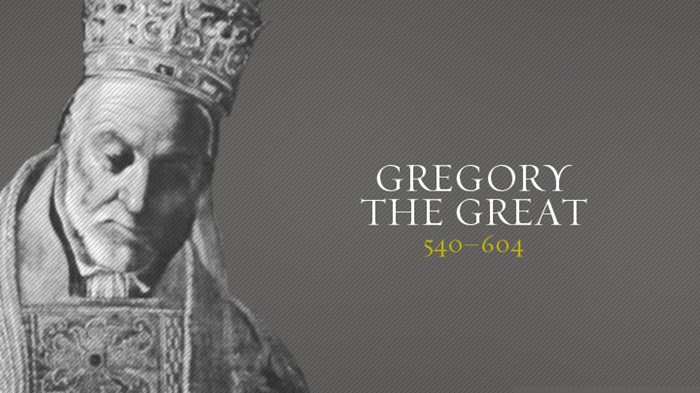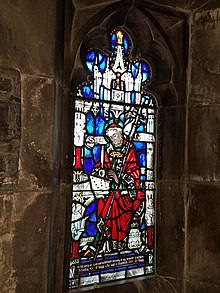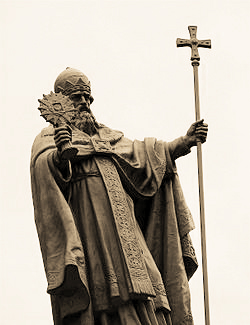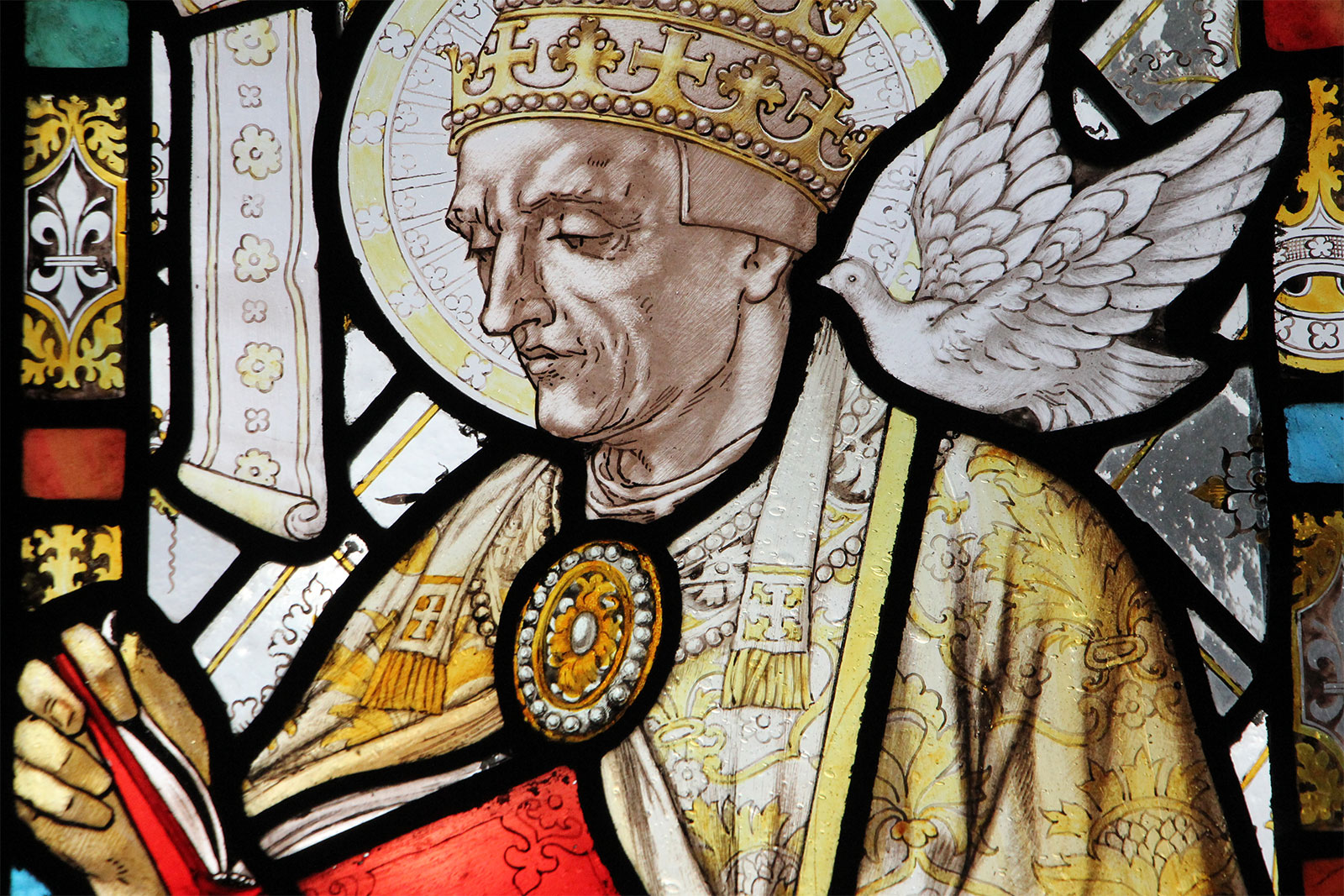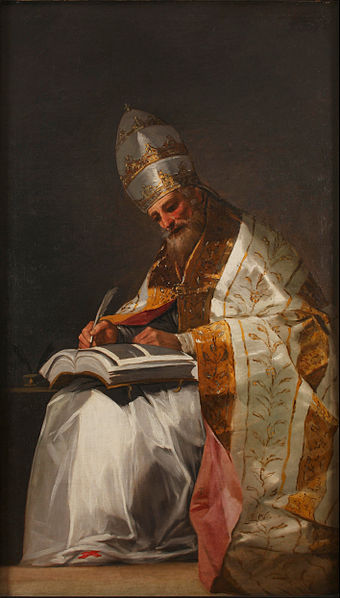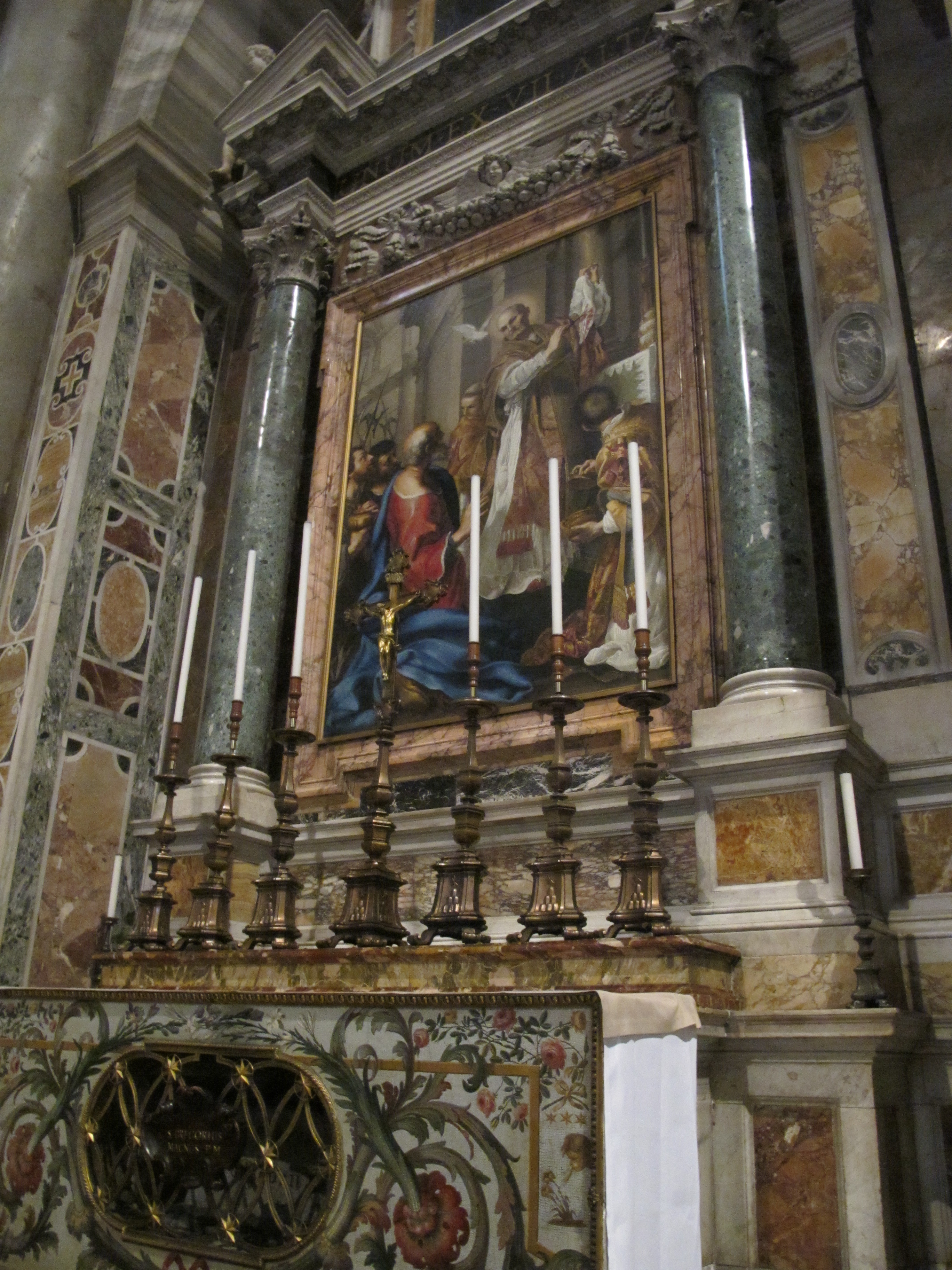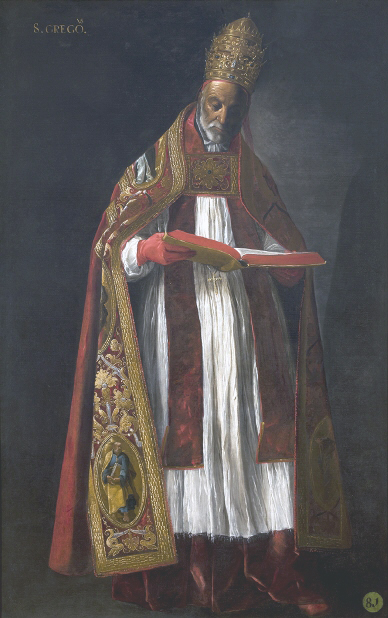– For the context of these translations click here –
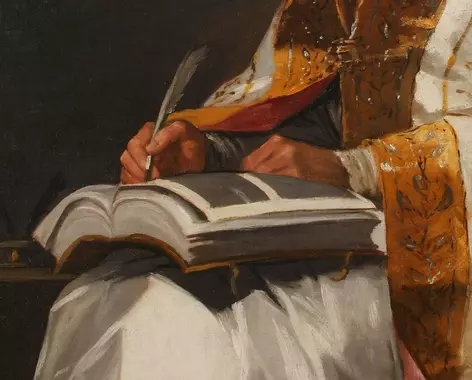 Pope Gregory’s books
Pope Gregory’s books
The triumphs of the abstruse, not to say of foolishness, in no less than thirty-five books, which the author himself described as libri morales and that in the Middle Ages, to which they served as a compendium of morals, were called Magna Moralia, with incessant summaries, compilations, commentaries and enormous diffusion. And that creation of Gregory, the most ancient and vast, founded his fame as an expositor of Scripture (deifluus, radiator of God) and a moral theologian: the product of a mind that contemporaries and posterity placed above Augustine and exalted as incomparable, whose works in copies or epitomes and summaries flooded all medieval libraries and for centuries obscured the West!…
The famous papal book, which, like everything else written by Gregory, lacked any originality, summarised, it was said, what had already been formulated by the three ‘great Latin fathers’—Tertullian, Ambrose and Augustine—and at the same time transmitted to the Middle Ages the ancient exegesis of the Catholic coryphaeus. No doubt this great work deserves consideration.
The imposing and grandiose work Dialogues on the Life and Miracles of the Italic Fathers soon became extraordinarily popular with the help of God and the Church, exerting ‘the widest influence’ on posterity (H.J. Vogt). It contributed through the Longobard Queen Theudelinde to the conversion of her people to Catholicism. It was translated into Arabic, Anglo-Saxon, Old Icelandic, Old French and Italian. Pope Zacharias (741-752), a Greek who was characterised above all by ‘prudence’, translated it into Greek. It was to be found in all libraries and greatly broadened the spiritual horizons of the religious. It was ‘read by all learned monks’ and with its ideas about the afterlife, which created a school, and especially with its numerous miraculous claims, it gave rise to ‘a new type of religious pedagogy’ (Gerwing)…
There is nothing crude or superstitious here, which goes by the name of virtues: healings of the blind, resurrections of the dead, expulsions of unclean spirits, miraculous multiplications of wine and oil, apparitions of Mary and Peter, apparitions of demons of all kinds. In general, punitive miracles enjoy special preference. Creating fear was—and is—the great speciality of the parish priests.
It is no coincidence that the fourth and last book ‘for the edification of many’ (Gregory) revolves dramatically around death, the so-called afterlife and the reward and punishment in the beyond: extra mundum, extra carnem. During the plague of 590, Gregory says that in Rome ‘one could see with one’s bodily eyes how arrows were shot from the sky, which seemed to pierce people’. A boy, who, out of homesickness and a desire to see his parents, escaped from the monastery for one night, died on the very day of his return. But when he was buried, the earth refused to receive ‘such a shameless criminal’ and repeatedly expelled him, until St. Benedict placed the sacrament in the boy’s breast. Criminals were naturally those who, even as children, were locked up for life in the monastery exclusively for the ecclesiastical ambition of power and profit.
______ 卐 ______
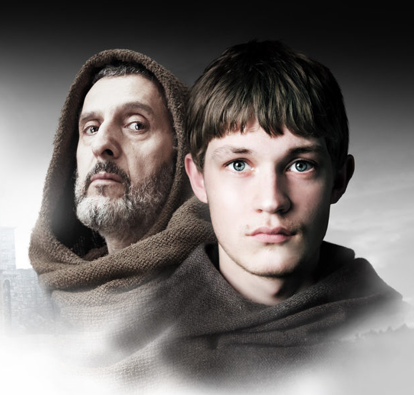 Editor’s Note: And also for the asses of the ephebes, insofar the vow of celibacy of the monks burned them (and continues to burn them). Without such a vow, they could be able to have a normal outlet for their lust. In the country where I live there is an obscene saying: “En tiempos de guerra cualquier agujero es trinchera” — ‘In times of war [burning celibacy] any hole is a trench’!
Editor’s Note: And also for the asses of the ephebes, insofar the vow of celibacy of the monks burned them (and continues to burn them). Without such a vow, they could be able to have a normal outlet for their lust. In the country where I live there is an obscene saying: “En tiempos de guerra cualquier agujero es trinchera” — ‘In times of war [burning celibacy] any hole is a trench’!
______ 卐 ______
Pope Gregory ‘the Great’ records a whole series of resurrections of the dead, carried out by the priest Severus, St. Benedict, a monk of Monte Argentario, and Bishop Fortunatus of Todi, the famous conjurer of spirits, who also immediately restored sight to a blind man with the simple sign of the cross. On the other hand, an Arrian bishop was punished with blindness. And among the Longobards there is a demon who was dragged out of a church by monks.
Gregory tells us of the multiplication of wine by Bishop Boniface of Ferentino, who with a few bunches of grapes filled whole barrels to overflowing. And the Prior Nonnoso of the monastery of Mt. Soracte, in Etruria, with his prayer alone moved a stone which ‘fifty pairs of oxen’ had not been able to move. Gregory reports that Maurus, a disciple of St. Benedict, walked on water. ‘O miracle unheard of since the time of the Apostle Peter’ and that a ‘brother gardener’ tamed a snake, which stopped a thief; that a raven carried away bread that was poisoned (‘In the name of our Lord Jesus Christ take this bread and carry it to a place where no man can find it! And then the crow opened its beak’).
Gregory the Great! A nun forgets to ‘bless with the sign of the cross’ a head of lettuce before eating it, and so gobbles up Satan, who snarls out of his mouth: ‘But what have I done, what have I done? I was sitting quietly on the head of lettuce, and she came and bit me’. Bad woman but blessed be God: a saint expels Satan from her, Gregory the Great!
But there are also altruistic and helpful devils; devils who even, and precisely, render their services to the clergy and obey their word. ‘Come here, devil, and take off my shoe!’ a priest orders his servant, and the devil promptly serves him personally. Oh, and Gregory knew the devil in many of his forms: as a snake, a blackbird, a young black man and a foul monster. Only as pope he didn’t know him. Indeed, caution and enlightenment were called for.
According to Gregory, the holy bishop Boniface performed one miracle after another. Once, when he was in urgent need of twelve gold coins, he prayed to St. Mary, and immediately found in his pocket what he needed: in the folds of his tunic appeared ‘suddenly twelve gold coins, glittering as if they had just come out of the fire’. St. Boniface gives a glass of wine, the contents of which don’t run out, although one constantly drinks from it. And what about the miracle of the caterpillars, or the miracle of the wheat? No, Gregory ‘cannot pass them by in silence’. Indeed, when St Boniface ‘saw how all the vegetables withered, he went to the caterpillars and said to them: “I adjure you in the name of the Lord and our God, Jesus Christ, get out of here and don’t destroy these vegetables”. Immediately they all obeyed the words of the man of God, so not one of them was left in the garden’…
But for this doctor of the Church, ‘the Great’, not even all this gross nonsense—which whole generations of Christians have believed, they had to believe—didn’t exclude him from the supreme honours of a Church.
The miracles of punishment have always been preferred. Sometimes a fox falls dead, sometimes a minstrel. The important thing is that the power of the priests is seen! Even the most believing churchman cannot believe (and not only today) that the ‘great’ pope would have been so gullible. But Karl Baus, for whom the ‘greatness of Gregory’ lies precisely ‘in his vast pastoral action’, doesn’t say a single word about the very pastoral Dialogues in the four-volume Catholic Handbook of Church History. And Vogt opens the chapter on Gregory with a grandiosely comic sentence about his greatness: ‘Gregory the Great, the last of the four great doctors of the Latin Church, lived in an age which neither demanded nor permitted great achievements’. Á la bonne heure! Well said, indeed.
He who was to be the guide of the centuries to come also enriches the topography of hell. Its entrances, he declares, are mountains that spew fire. And as in Sicily the craters were getting bigger and bigger, he declared once again the imminent end of the world: due to the agglomeration of the damned, wider and wider accesses to hell were required. Whoever enters there will never return. But Gregory knew that some of the dead were released from purgatory after thirty masses. This was the case with a monk who had broken his vow of poverty. Gregory also knew that not all are freed from limbo, and that even children who die without baptism burn in eternal fire.
The modern progressives, who are now rushing to extinguish hellfire—because it seems incredible to them—have against them not only the great pope and doctor of the Church, but also Jesus himself and countless other coryphaei of the Church. For Gregory, the eternity of the pains of hell ‘are true with all certainty’, and yet he teaches that ‘the torment of his fire is for something good’…
Isn’t this a magnificent religion, the religion of love?
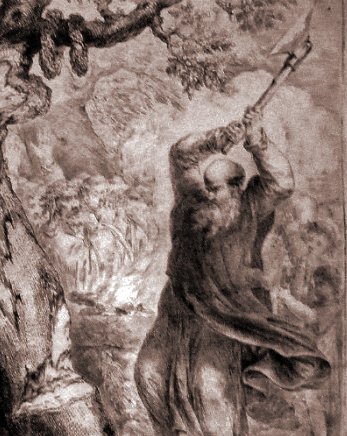 Gregory exhorts Brunhilda to forcibly prevent the worship of sacred trees and other idolatries and recommends the use of scourging, torture and imprisonment to obtain the conversion of rebellious ‘pagans’. And, of course, the pope also sent relics to the queen.
Gregory exhorts Brunhilda to forcibly prevent the worship of sacred trees and other idolatries and recommends the use of scourging, torture and imprisonment to obtain the conversion of rebellious ‘pagans’. And, of course, the pope also sent relics to the queen.